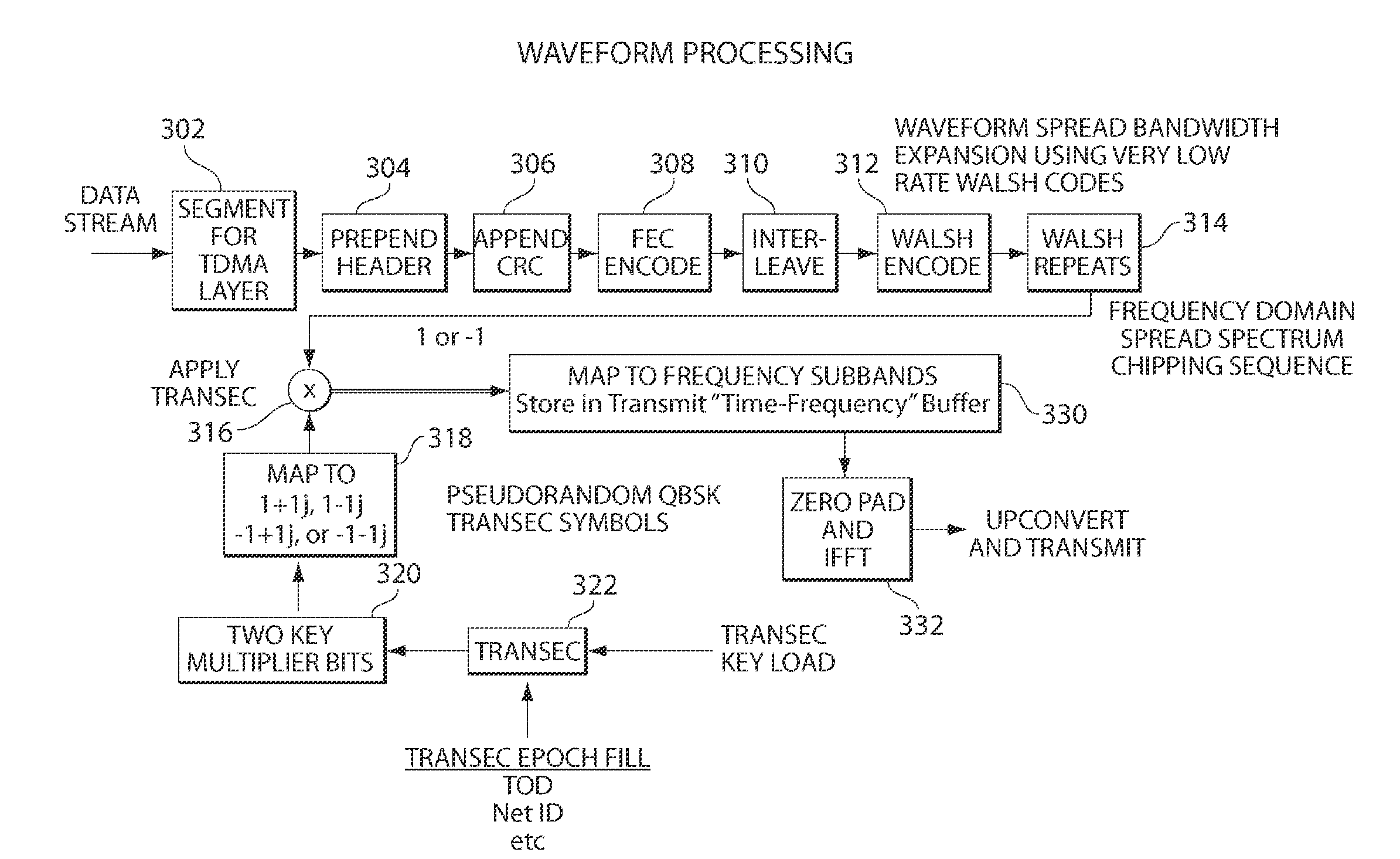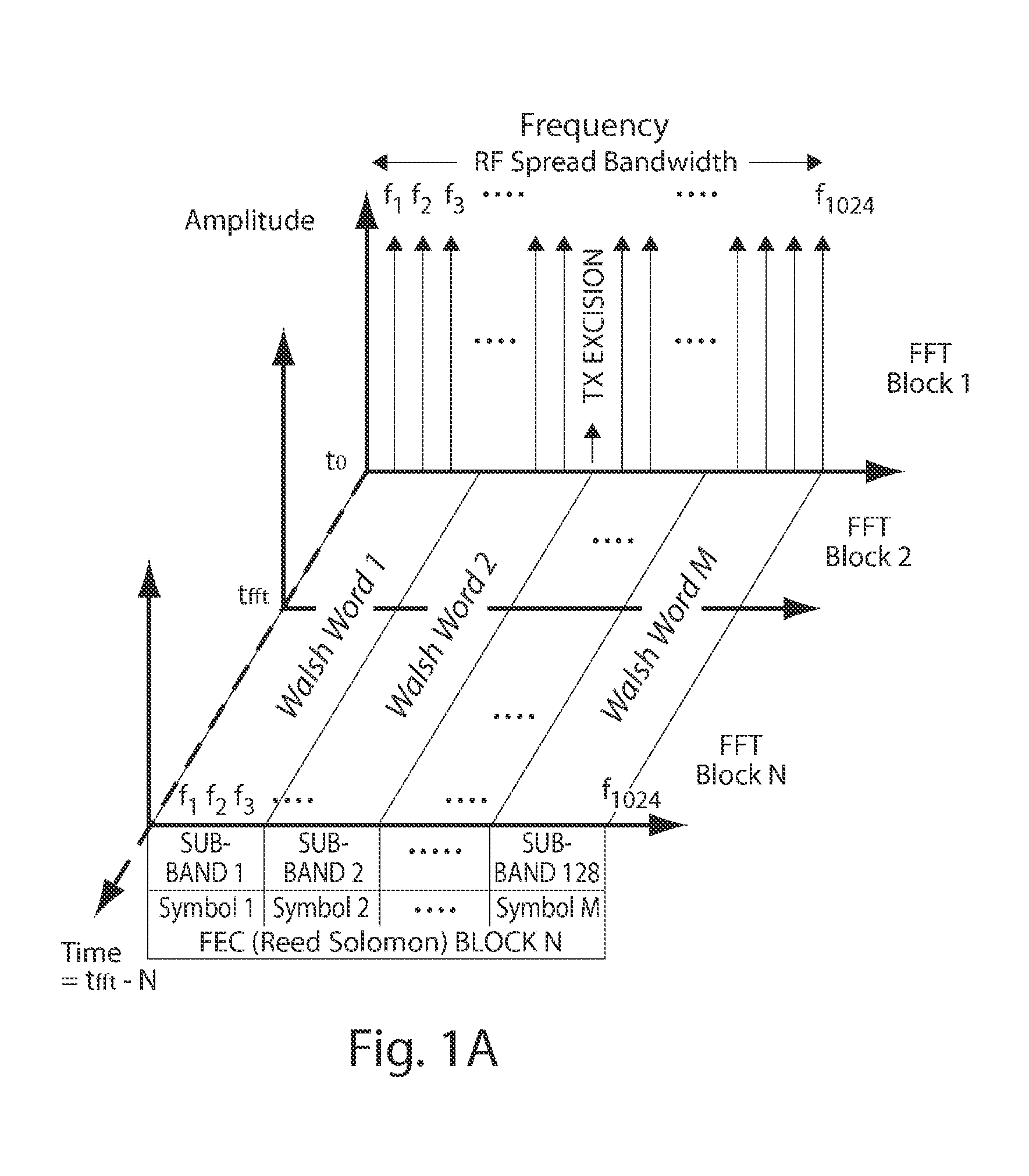Frequency Domain Direct Sequence Spread Spectrum with Flexible Time Frequency Code
a frequency domain and time frequency code technology, applied in the field of communication systems, can solve the problems of unrecoverable receiver recovery, severe performance degradation of wireless or mobile radio communications, and attenuation beyond use of desired receive frequency,
- Summary
- Abstract
- Description
- Claims
- Application Information
AI Technical Summary
Benefits of technology
Problems solved by technology
Method used
Image
Examples
Embodiment Construction
[0020]Referring now to FIG. 1, a spread spectrum radio frequency communication system 100 is shown to include a transmitter 110 and a receiver 120. The transmitter 110 includes a modulator 10 wherein an input data signal is encoded and modulated using a novel spread spectrum waveform as described hereinafter and a resulting modulated signal is fed to an exciter 20. The exciter 20 up converts the modulated signal to a transmit frequency signal and feeds the transmit frequency signal to an amplifier to increase the power of the signal. The output signal from the amplifier is then fed to an antenna 40 for propagating a transmit RF signal to the receiver 120. The transmit RF signal is captured by a receive antenna 50 which feeds a received signal to a receiver 60. The receiver 60 down converts the received signal to a baseband signal wherein the baseband signal is fed to the demodulator 70. The demodulator 70 then demodulates and decodes the baseband signal to an output data signal as d...
PUM
 Login to View More
Login to View More Abstract
Description
Claims
Application Information
 Login to View More
Login to View More - R&D
- Intellectual Property
- Life Sciences
- Materials
- Tech Scout
- Unparalleled Data Quality
- Higher Quality Content
- 60% Fewer Hallucinations
Browse by: Latest US Patents, China's latest patents, Technical Efficacy Thesaurus, Application Domain, Technology Topic, Popular Technical Reports.
© 2025 PatSnap. All rights reserved.Legal|Privacy policy|Modern Slavery Act Transparency Statement|Sitemap|About US| Contact US: help@patsnap.com



